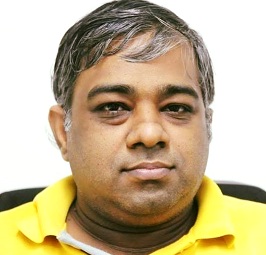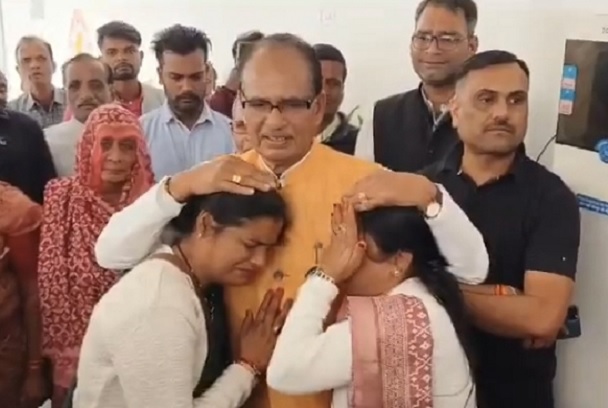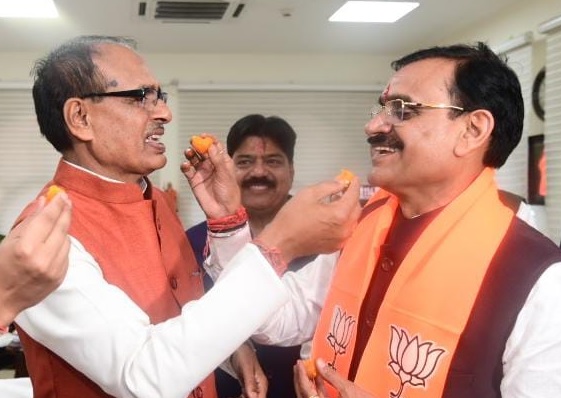INSIGHT: How fake news that has potential to inflame passions, divide society gets planted in media

Shams Ur Rehman Alavi
NewsBits.in
In the last few days, there has been a barrage of fake news and weird reports that make their way into mainstream newspapers and TV channels.
Such reports are debunked a day or two later but by then, such false propaganda reaches millions of people and the TV channels seldom report that the story carried earlier on their channel, was fake. Even fact-checkers' stories don't reach as many people and hence fake news affects more people.
People outside the media industry often wonder, how such bizarre things appear in print if they were fake and despite the fact that later police and administration even say that the report was false. Recently, the reports like Tablighi Jamaat members 'eating 25 rotis, demanding biryani, misbehaving with nurses and defecating in public', were carried but most of them turned out to be fake and police also said that the reports were incorrect.
But the question is that how these 'reports' are created in first place, how they make their way despite the supposedly strict editorial judgment at several news organisations and how they go viral despite the fact that media honchos-editors know that fake news can damage the society, it has caused social disturbances, led to attacks and fuelled hysteria.
SENSATIONALISM AND CREATION OF NEWS
Let's go back to the decade of nineties to understand the 'structure' and 'pattern'. If any gang from South India was arrested in North India, particularly MP-UP, reporters would often write on their own, 'Inke LTTE se sambandh ki jaanch ki jaayegi'. Just because it was enough to make news look 'sensational', 'important' and worth 'page 1'.
In those days, in press conference, when a gang of 'cycle lifter' or 'ganja seller' with 'South Indian members' was caught, reporters would invariably ask, 'do they have LTTE connection?'. SP would say, 'We will interrogate'. Headline next day--Gang busted, under scanner for LTTE link.
This would happen in later years too. If a youth was arrested and policemen are questioned, 'Will you probe his links with particular organisations', policemen can't say 'NO' and suggest that they are not serious about grilling, and would say that interrogatiion is on and that they will cover all aspects, interrogate if he has links.
But the report next day will be, 'Youth's link with that organisation to be probed", that basically links the person and makes him an accomplice and this coverage that criminalizes a person, affects his case in the court as well. Many of the reporters who who do it routinely, don't feel this is wrong or criminal.
They really feel it is 'harmless' (sic), a story filed, day's work done. Trick of trade. It is because there is no need felt to verify a sensitive story--just write it, quote a 'source', anonymous source & that's enough. There are reasons for this. Reporters with big, fat ego who within few years get to believe that they are 'investigative journalists' but if mocked, 'yaar khabar nahi nikaal paa rahe', then it hurts, so some angle has to be brought. A lot of other aspects as well, how this 'pattern' in reporting continues.
THE STRATEGY, THE OLD PATTERN AND COOKING UP FALSEHOODS
I will give an example from the last decade. Whenever a youth belonging to minority community was picked up and was in ATS or some other agency's custody, and reporters in that city were expected to file follow-up stories for days, even weeks. If a 'prized catch' is in custody of a special unit that doesn't share lot info or just because bureau chief-editor want 'big news' to be taken on page one and would tell in meeting, 'How can we let the story die in two days'.
Reporters have the set of questions--'What has the guy told in interrogation, what's the revelation, what's the module, what CDR tells, what are the links, has he broken down, does he cry, does he regret...' all these questions are standard. But when you don't get sensational news, 'scoop' & you are expected to bring it, then, it is cooked up on the basis of conjectures, general biases, old patterns or hearsay.
At some places 1-2 reporters may decide that let's write 'this thing today' [a mutual understanding that we will write similar thing but slight variation so that it appears correct too and not fantastic either]. Tell in office, 'sunne mein aa raha hai aisa...sootron se likh dein' (we have heard this but from sources, no confirmation). There is a standard technique also--he is unhappy with food, he wants this. Who will know?
Now it is added in the copy that officials have said that 'they are interrogating, the guy is a tough nut to crack, hardened, doesn't reveal info and it may come up in the course of probe'. But the damage is done, the headline and intro, all have set up things well and a 'juicy report' is out.
WHY MORE PEOPLE WOULD ULTIMATELY 'BELIEVE' FAKE NEWS
If a report, even if it is fake, has appeared on several TV channels and newspapers apart from WhatsApp forwards and Facebook-Twitter pages of news organisations, it is natural for people to feel, 'how all this can be false'. 'There must be some truth in it'. This is the victory of fake news over truth.
The reports like throwing tantrums or demand for biryani are the 'usual desktop stories' as no one going to contradict. Even public prosecutor had once accepted that he had planted it in media so that the person didn't get sympathy. I will explain it completely, but first going to the era of late 90s and early part of the last decade so that you can understand how 'vilification', 'sensationalizing' and preying on 'soft target' has been a part of this media tradition (sic):
A 'national newspaper' has editions in state capitals but it get news from districts where the stringer, a non-salaried reporter who often does part-time job of sending stories and hesometimes get as low as Rs 75-100 per story. Some of them are good reporters too. But if the Chief calls from the state capital on why he is not coming up with follow-up. 'Doosre akhbar mein to chhapa hai, tum kya kar rahe ho' (Other or our rival paper carrying it, why are you not filing this story). That's how the demand for such news is created and remains.
WHY THERE IS NO ACTION AGAINST FAKE NEWS
The reason people avoid action against fake news is that those who suffer don't generally act. If someone is in trouble, family's immediate focus is on getting him released or to think how person doesn't face harassment in custody & gets proper food, arranging money for lawyer or have other worries, rather than focusing on tackling this menace--vilificaction campaign.
Apart from journalists who are supposed to have connections, no one else has the access or knows the truth either. So it continues, without any exception. There is this dirty trick about reporting in India. Ask police, 'is he connected to X or Y group?' Police may not have interrogated, & would say, 'yet to ask'.
Now, it is easy to write in copy, 'links with this group [according to sources] or with a question mark-excalamation mark' but in headline it will be direct. For different religious-caste-community groups too, there are standard set of 'follow-ups', like about whom follow up story can be done with the line 'under scanner for connections with Maoists' or 'links with Khalistanis to be probed'.
Even editors with credentials fail to beat this system. A national English daily had an editor who refused to take stories based on 'hearsay' and mere 'unnamed sources'. But two other 'top' English dailies carried it on Page 1 & such was pressure, he felt his judgment failed paper and he was responsible for ultimately 'missing' the story, even though his reporters had it.
'It's coming on the channel, on sites, in other papers too, how can we MISS. So throw ethics and what that instruction about not carrying stories with unnamed sources, just take it. So it continues. As the ombudsmen, the media monitoring bodies are toothless and there is no redressal mechanism, this malpractice continues. The result is that society suffers. [Photo courtesy, Danya Gutan Pexels.com]










